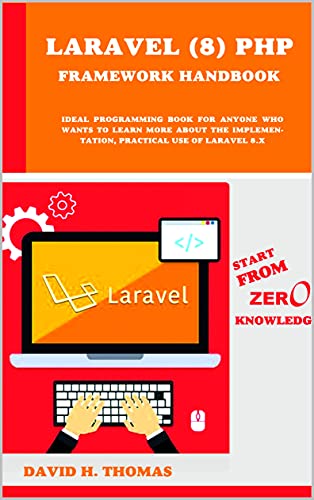Download This PDF Book: Organic Chemistry 8th Edition by William H. Brown , Brent L. Iverson, Eric Anslyn, Christopher S. Foote, published in 2018 for free.
Master course concepts and improve problem-solving skills with ORGANIC CHEMISTRY, 8th Edition. This student-friendly text focuses on how to skills, and includes examples, problems, and end-of-chapter comprehensive study guides to help you prepare for exams.
To help you understand reaction mechanisms, the authors offset them in a stepwise fashion and emphasize similarities between related mechanisms using just four different characteristics: breaking a bond, making a new bond, adding a proton, and taking a proton away.
Thoroughly updated, the book offers numerous biological examples for premed students, unique roadmap problems, a wide range of in-text learning tools, and new author-created videos to help you excel.
Organic Chemistry is a student-friendly, cutting edge introduction for chemistry, health, and the biological sciences majors. The Eighth Edition builds on unified mechanistic themes, focused problem-solving, applied pharmaceutical problems, and biological examples.
Stepwise reaction mechanisms emphasize similarities among mechanisms using four traits: breaking a bond, making a new bond, adding a proton, and taking a proton away. Pull-out organic chemistry reaction roadmaps designed stepwise by chapter help students devise their own reaction pathways.
Emphasizing “how-to” skills, this edition is packed with challenging synthesis problems, medicinal chemistry problems, and unique roadmap problems.
There are four new features in the eighth edition, each intended to enhance dramatically student engagement and learning. We are excited to introduce almost 100 videos, which are lessons from the authors in an audio/visual format that take students through the working of example problems and important graphics. In other words, most of the key lessons from the book.
We also introduce three other new features designed to enhance student learning and test preparation: (1) “Things You Should Know,” (2) Margin bullets emphasizing and reinforcing key foundational ideas that recur throughout the book, and (3) the most comprehensive end-of-chapter “Study Guides” of any text that recap the key ideas, lessons, homework problems, and reactions of each chapter.
About the Author
William H. Brown is emeritus professor of chemistry at Beloit College, where he was twice named Teacher of the Year. His teaching responsibilities include organic chemistry, advanced organic chemistry and, more recently, special topics in pharmacology and drug synthesis. He received his Ph.D. from Columbia University under the direction of Gilbert Stork and did postdoctoral work at California Institute of Technology and the University of Arizona.
Brent L. Iverson is the Warren J. and Viola Mae Raymer Professor, a University Distinguished Teaching Professor and the dean of the School of Undergraduate Studies at The University of Texas at Austin. His research spans the interface of organic chemistry and molecular biology. His group has developed several patented technologies, including an FDA-approved treatment for late-stage anthrax.
Eric Anslyn received his Ph.D. from California Institute of Technology. He is the Welch Regents Chair of Chemistry and a University Distinguished Teaching Professor at The University of Texas at Austin, as well as an HHMI Professor. His research focuses on the physical and bioorganic chemistry of synthetic and natural receptors and catalysts.
Christopher S. Foote was a professor of chemistry at the University of California, Los Angeles. His scholarly credits included Sloan Fellow; Guggenheim Fellow; ACS Baekland Award; ACS Cope Scholar; Southern California Section ACS Tolman Medal; President, American Society for Photobiology; and Senior Editor, Accounts of Chemical Research.
CONTENTS
Covalent Bonding and Shapes of Molecules
Things You Should Know I: General Conclusions from Quantum Mechanics
Alkanes and Cycloalkanes
Stereoisomerism and Chirality
Acids and Bases
Alkenes: Bonding, Nomenclature, and Properties
Things You Should Know II: Nucleophiles and Electrophiles
Things You Should Know III: Reaction Mechanisms
Reactions of Alkenes
Alkynes
Haloalkanes, Halogenation, and Radical Reactions
Things You Should Know IV: Common Mistakes in Arrow Pushing
Nucleophilic Substitution and b-Elimination
Alcohols
Ethers, Epoxides, and Sulfides
Infrared Spectroscopy
Nuclear Magnetic Resonance Spectroscopy
Mass Spectrometry
An Introduction to Organometallic Compounds
Aldehydes and Ketones
Carboxylic Acids
Things You Should Know V: Carboxylic Acid Derivative Reaction Mechanisms
Functional Derivatives of Carboxylic Acids
Enolate Anions and Enamines
Dienes, Conjugated Systems, and Pericyclic Reactions
Benzene and the Concept of Aromaticity
Reactions of Benzene and Its Derivatives
Amines
Catalytic Carbon-Carbon Bond Formation
Carbohydrates
Lipids
Amino Acids and Proteins
Nucleic Acids
Organic Polymer Chemistry
About The Book:
Publisher : Cengage Learning; 8th edition (January 1, 2017)
Language : English
Pages : 1312
File: PDF, 137 MB
Free Download the Book: Organic Chemistry 8th Edition by William H. Brown
PS: Share the link with your friends
If the Download link is not working, kindly drop a comment below, so we'll update the download link for you.
Happy downloading!








